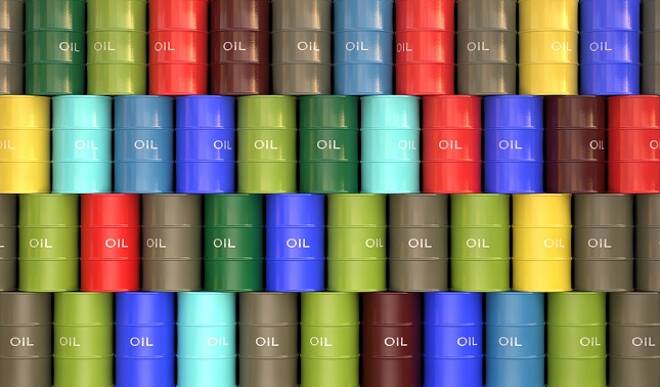Advertisement
Advertisement
Oil Price Fundamental Daily Forecast – New COVID-Related Demand Concerns Ahead of API Inventories Report
By:
May be finding temporary support after OPEC said it believes oil markets do not need more crude than they plan to release in the coming months.
U.S. West Texas Intermediate and international-benchmark Brent crude oil futures are trading flat at the mid-session on Tuesday. The markets are trading inside yesterday’s range, which suggests investor indecision and impending volatility.
Prices are being supported despite a slew of negative news after OPEC and its allies said they believe the market does not need more crude. Gains are likely being capped by the stronger U.S. Dollar which is making dollar-denominated crude more expensive for foreign buyers.
At 15:27 GMT, October WTI crude oil futures are trading $67.13, up $0.08 or +0.12% and October Brent crude oil is at $69.87, up $0.36 or +0.52%.
Weak Demand Picture in Asia-Pacific Region Emerging Due to COVID-Related Restrictions
Japan on Tuesday extended its state of emergency in Tokyo and other regions and announced new measures covering seven more prefectures to counter a spike in COVID-19 infections that is threatening the medical system, according to Reuters.
“The Delta variant raging across the world is causing unprecedented cases in our country,” Prime Minister Yoshihide Suga said. “Serious cases are increasing rapidly and severely burdening the medical system, particularly in the capital region.”
In New Zealand, Prime Minister Jacinda Ardern put the country under strict lockdown on Tuesday after the discovery of the first coronavirus case in six months was reported in the largest city of Auckland.
All New Zealand will be in the toughest, level-four lockdown for at least three days from Wednesday. Auckland and Coromandel, a coastal town where the infected person also spent time, will be in lockdown for seven days.
“The best thing we can do to get out of this as quickly as we can is to go hard,” Ardern told a news conference.
Mixed Economic Picture Out of China, US
Daily crude processing in China, the world’s biggest oil importer, fell to its lowest in July since May 2020 as independent plants slashed production amid tighter quotas, high inventories and weakening profits, data showed on Monday.
Additionally, China’s output and retail sales growth also slowed sharply and missed expectations in July, as new COVID-19 outbreaks and floods disrupted businesses.
Data from the United States was mixed with U.S. retail sales falling more than expected in July as shortages depressed motor vehicle purchases and the boost to spending from the economy’s reopening and stimulus checks faded, suggesting a slowdown in economic growth early in the third quarter.
Meanwhile, production at U.S. factories surged in July, boosted by an acceleration in motor vehicle output as auto makers either pared or canceled annual retooling shutdowns to work around a global semiconductor shortage.
Daily Outlook
OPEC may have brought a temporary end to the selling pressure after four sources told Reuters on Monday that the group believes oil markets do not need more crude than they plan to release in the coming months.
Balancing this news, on the supply side, U.S. shale oil output is expected to rise to 8.1 million barrels per day (bpd) in September, the highest since April 2020, according to government data on Monday.
At 20:30 GMT, traders will get the opportunity to react to the latest supply data from the American Petroleum Institute. This report could show the impact of the coronavirus surge on gasoline and distillate demand.
About the Author
James Hyerczykauthor
James Hyerczyk is a U.S. based seasoned technical analyst and educator with over 40 years of experience in market analysis and trading, specializing in chart patterns and price movement. He is the author of two books on technical analysis and has a background in both futures and stock markets.
Advertisement
